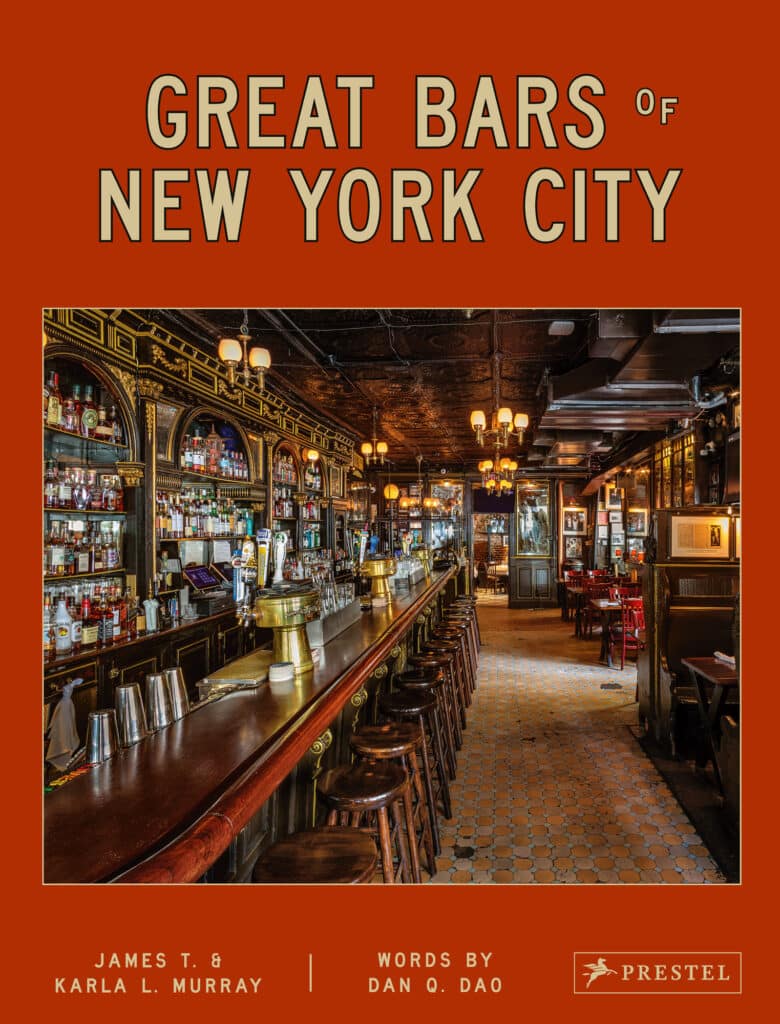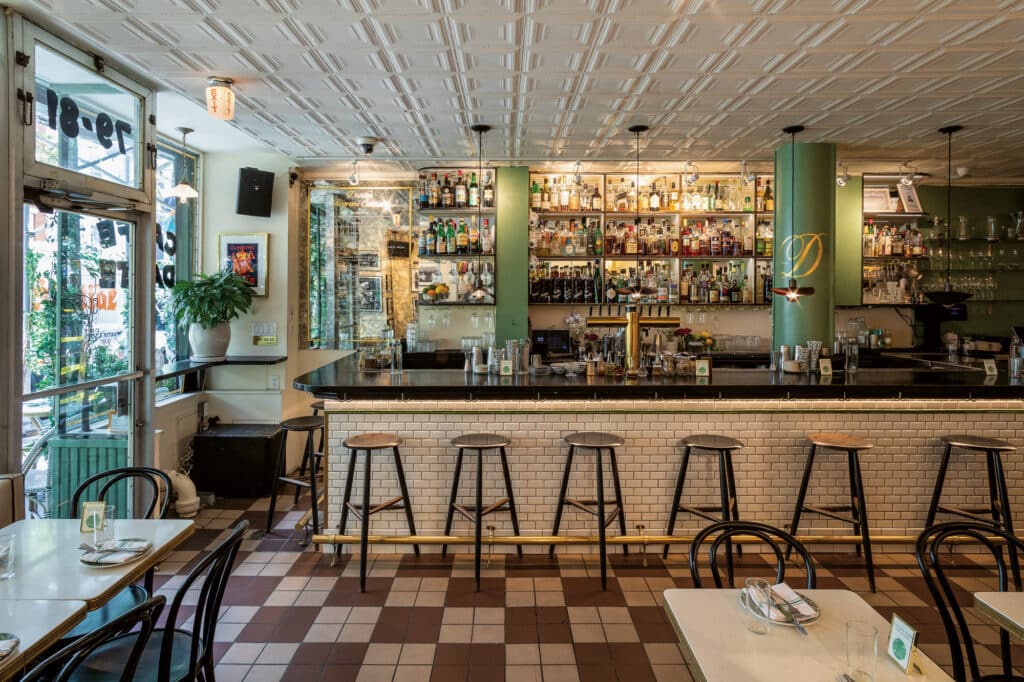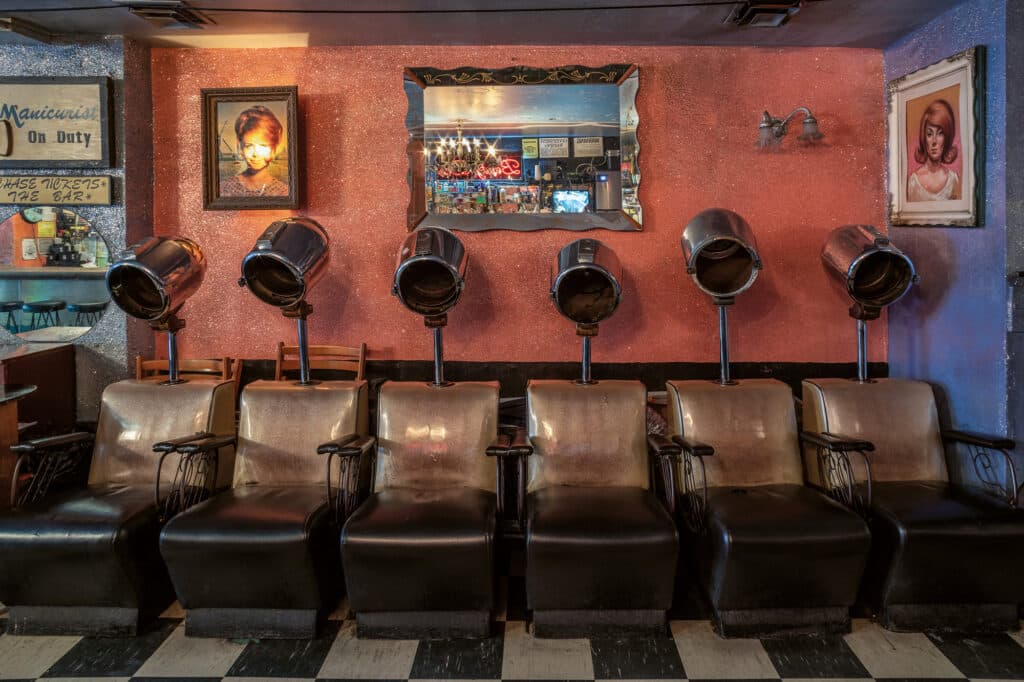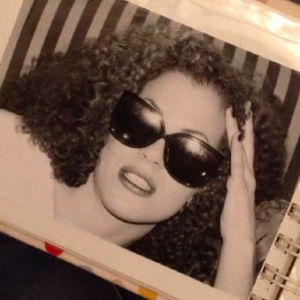If all the world is a stage, New York bars have become the stuff of myth, legend, and lore immortalized in film, literature, theater, television, and song. Over the past three centuries, these beloved pubs, cocktail lounges, and dives have become a home away from home, providing an intoxicating blend of camaraderie and escape from the frenetic pace of everyday life.
These independent businesses have become local characters in their own right, some, like the Stonewall Inn, becoming the site of liberation movements with global impact. In a city that is ever changing, they stand as a testament to the old guard, to the grit, wit, and charm that one so often finds amidst the pleasures of alcohol.

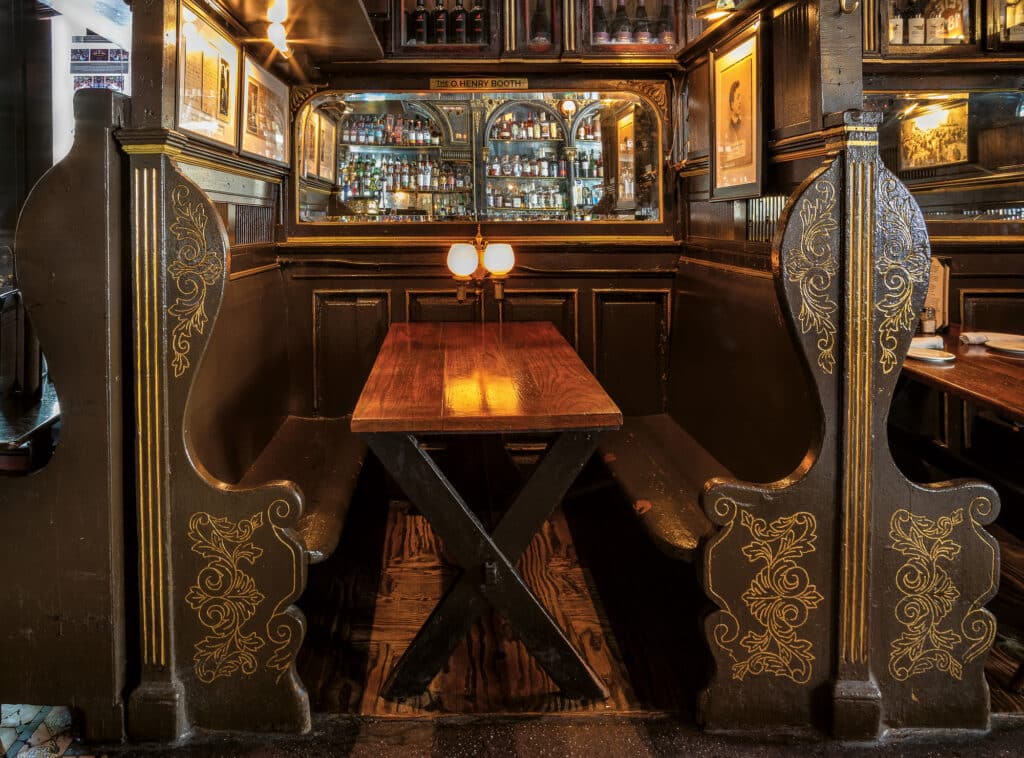
Over the past two decades, husband-and-wife photography team James and Karla Murray have devoted themselves to using their photography to help preserve and support the Mom & Pop shops that form the heart and soul of New York. Following the success of last year’s Store Front NYC: Photographs of the City’s Independent Shops, Past and Present, they have returned with an inside look at the city’s legendary watering holes.
With the publication of Great Bars of New York City: 30 of Manhattan’s Best-Loved Drinking Establishments, the inaugural volume in a series devoted to quintessential New York culture and its small businesses, James and Karla Murray have teamed up with culture writer Dan Q. Dao to spotlight 30 beloved neighborhood institutions.
Dao’s masterful storytelling lends a storybook feeling to the Murrays’ work, which draws inspiration from the photographer Robert Polidori, cinematographer Christopher Doyle, and filmmaker Wong Kar-wai to create a captivating look inside these store front businesses that continue to serve new generations of New Yorkers, both young and old.
“I saw you in Rudy’s”
Great Bars of New York City spotlights neighborhood institutions etched into the bedrock of New York, becoming the site of art, history, and culture itself. With its enchanting Maxfield Parrish mural, the King Cole Bar at the St. Regis Hotel was a perfect setting for The Devil Wears Prada, while East Village dive bar 7B Horseshoe Bar most recently had a starring role as the center of the Russian Doll multiverse.
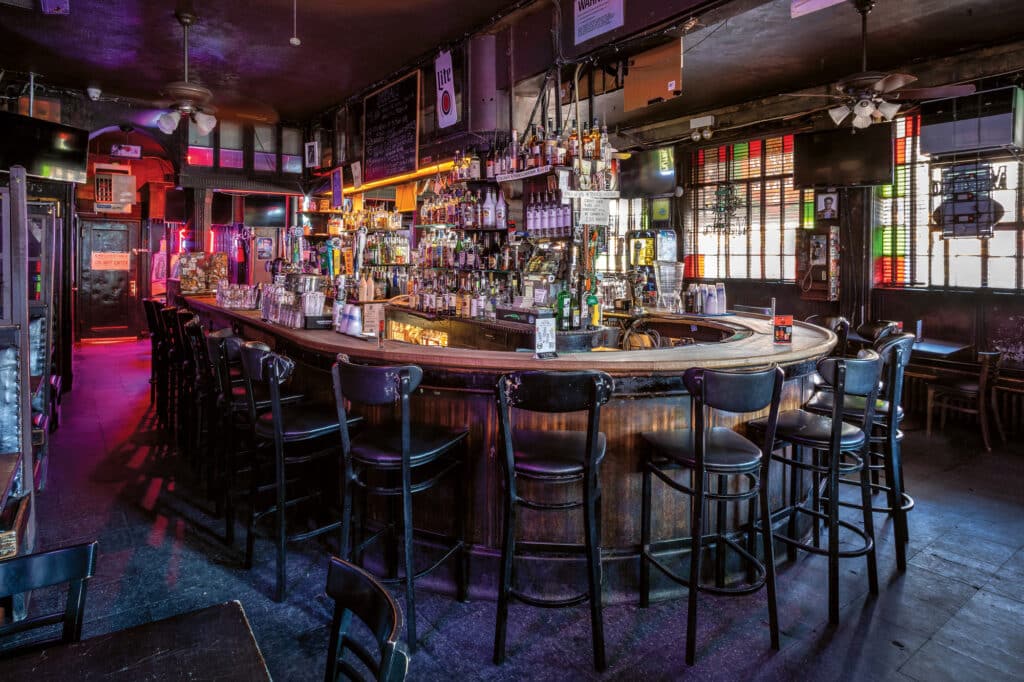
Artists, writers, musicians, performers, politicians, and underworld figures of all types have long consorted bars, their destines intertwined with their destination o choice. Jack Kerouac spent so much time at the White Horse Tavern that someone scrawled “Jack Go Home” on the bathroom wall while poet Dylan Thomas had his final drink there before uttering his final words in 1953: “I’ve had eighteen straight whiskies. I think that’s the record.”
Rudy’s Bar & Grill, the legendary dive bar that has been the cornerstone of Hell’s Kitchen for generations, has stood as a bulwark against gentrification, serving up cheap beer and free hotdogs to patrons. “I saw you in Rudy’s / you were very high,” Steely Dan famously sang on the 1977 hit song “Black Cow”, securing it’s place in the pop culture hall of fame.
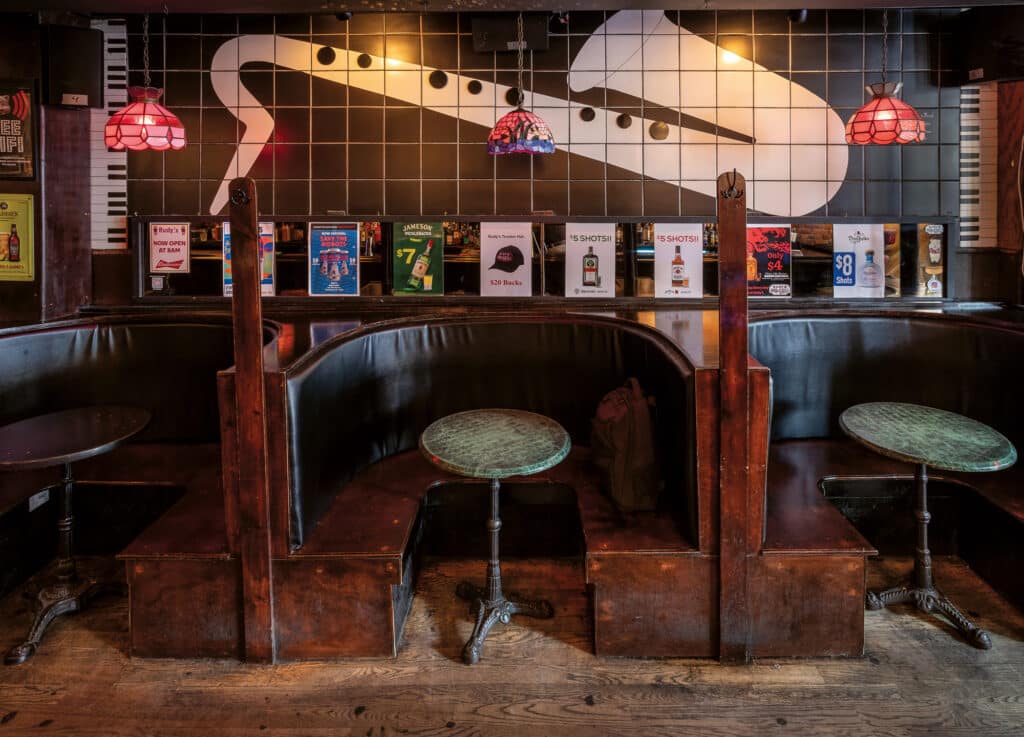
But perhaps what’s most inspiring about these local landmarks is that despite the turns the city has taken, they are all still in operation today — some more than a century after they first opened. Since 2020, more than 85 historic New York bars have permanently closed, while others like Cubbyhole, the beloved West Village lesbian bar, rallied with the support of loyal customers.
Histories Embedded in Place
“Bars have always been melting pots,” James and Karla Murray write in the introduction to Great Bars of New York City. “They’re places where people from all backgrounds and cultures can mingle and share stories while enjoying a drink, and where relationships often start.”
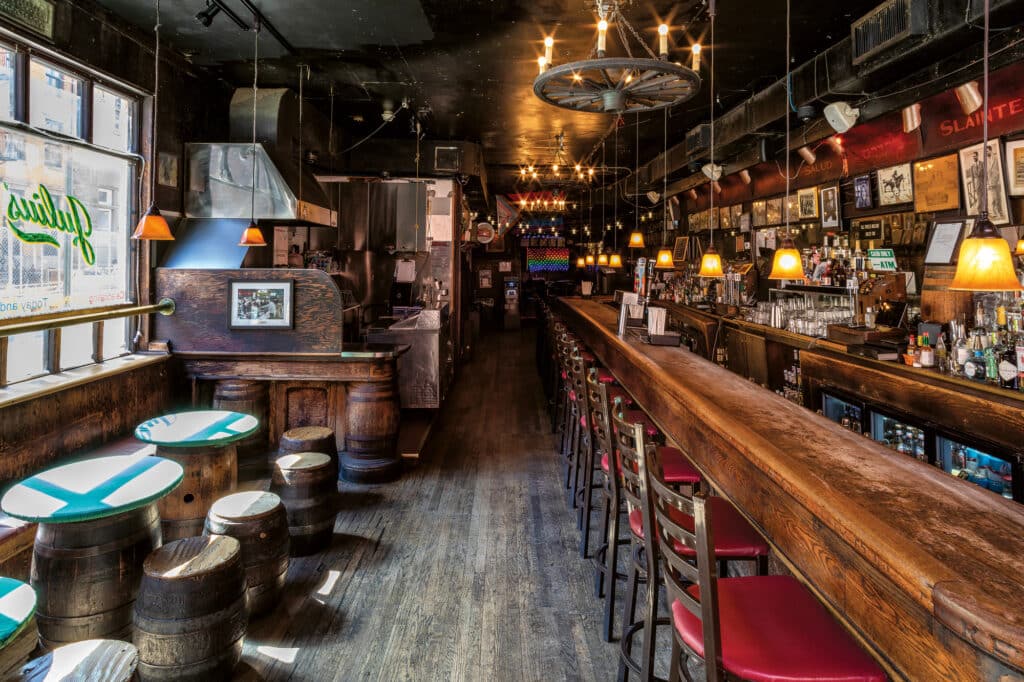
In that way, bars serve as a third space of sorts, one that sometimes has the power to change the world by standing beside the community. A few blocks away from the Stonewall Inn lies Julius’, New York’s oldest gay bar. Although Prohibition ended in 1933, it remained a crime to serve “suspected homosexuals.”
During police raids, patrons escaped through underground tunnels behind the bar, until 1966, when they decided to stand their ground. Three years before the Stonewall Uprising, gay activists from the Mattachine Society organized the “Sip-In” protest at Julius’. They brought the case to court, helping to pave the way for gay bars to open legally in New York.
Great Bars of New York City reminds us of the presence of these histories embedded in place, their legacies, the shoulders upon which we stand today.
Great Bars of New York City: 30 of Manhattan’s Best-Loved Drinking Establishments is published by Prestel and available for $40.
